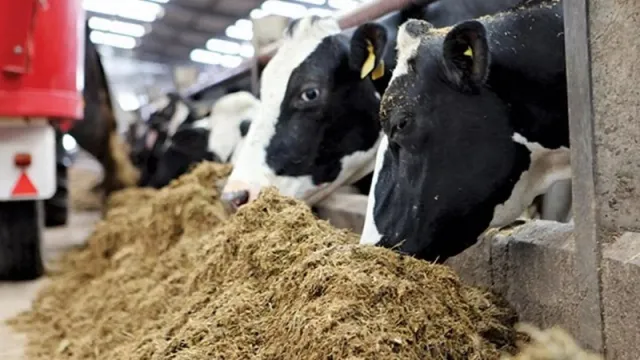Animal feed production falls to half of demand

Animal feed production falls to half of demand
Farmers are being urged to intercrop their maize with sunflower and increase alternative sources for animal feed as production falls short to less than half of Kenya’s demand.
The country's annual demand for livestock feed stands at 55 million metric tonnes against a production of 22 million metric tonnes leading to an acute shortage and high prices.
Climate change, Covid-19 and the Russia-Ukraine war are contributing to the rise in prices and shortage of livestock feeds that saw Kenya lose 2.5 million livestock due to lack of pasture and water. The prices of dairy feeds have almost doubled while hay has become scarce on account of the recent drought.
A 70 kilo bag of dairy meal that used to retail at Kes1800 now goes for Kes3200 while hay is currently unavailable prompting farmers to rely on free range grazing hence affecting production.
Kenya National Farmers Federation (Kenaff) representative told dairy farmers from North Rift to intercrop their maize farms with sunflower and use maize stalks for silage to cushion them during the time of need later in the year.
To address the acute short-age, the government also said it has also identified five value chains of hay, sorghum, cotton, sunflower and silage as one way of filling the deficit.
“We have a 10-year strategy that requires Kes460 billion to fully address the acute shortage of feed and fodder for our livestock,” head of animal feeds in the department Dr Stanley Mutua said.
The costs of animal feeds have been rising from 2021, with the price increases attributed to a shortage of raw materials such as soya and oil cakes seeing the most significant price increases.
Read also: High food costs pushing up obesity rates in poor countries – IFAD
Price of soya up by 60 percent
According to the Association of Kenya Feed Manufacturers (AKEFEMA), the price of soya and oil cakes increased by more than 60 percent forcing farmers to cut down on production as output prices have remained sticky.
A study by Timothy Njagi of Tegemeo institute indicates the high costs of commercial livestock feed, the unfriendly business environment for trade in livestock feed, and the weak regulatory environment have affected the availability, affordability, and utilisation of quality commercial feeds to grow the livestock value chains.
This has led to increased competition from imports for livestock products and animal feed from neighbouring countries.
As a result, poor animal husbandry, mainly because of poor feeding practices, has led to low livestock productivity that has seen the sector’s contribution to agricultural GDP decline over the years.
The Tegemeo Institute study suggests that to boost animal feed manufacturers and livestock farmers, the waiver of the ban on genetically modified products will enable access to cheaper raw materials at the world market, sustainably reduce animal feed prices, and is a more sustainable solution towards attaining competitiveness of livestock value chains.



